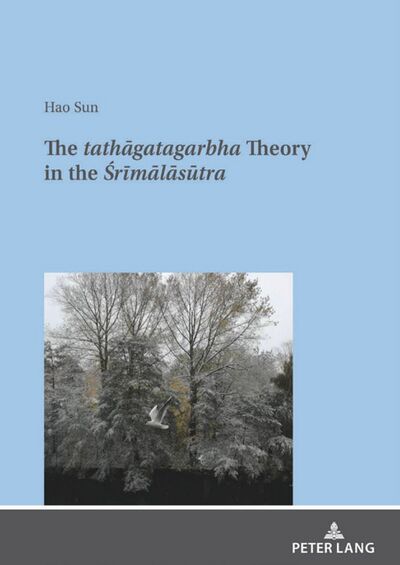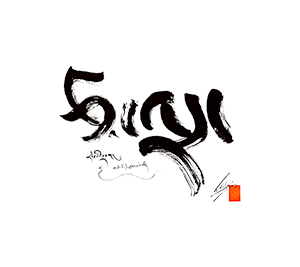- Acknowledgements
- Chapter 1 Introduction
- 1. Tathāgatagarbha as the refuge, the support, and the basis of both conditional and unconditional dharmas
- 2. The association of tathāgatagarbha with dharmakāya
- 3. The identification of tathāgatagarbha with prakṛtipariśuddhagarbha
- 4. From lokottaragarbha and prakṛtipariśuddhagarbha to a comprehensive textual study
- 1. Tathāgatagarbha as the refuge, the support, and the basis of both conditional and unconditional dharmas
- Chapter 2 Some essential terms related to tathāgatagarbha
- 1. On mukta and jñāna/jña
- 1.1 The polysemous term mukta
- 1.1.1 Mukta in the Bhagavadgītā
- 1.1.2 Mukta meaning “liberated”, “freed”, “released” in a formula in the AP
- 1.1.3 Mukta in its literal and figurative meaning attested in the AŚ, Lal, SP and MSA
- 1.1.4 Mukta in three other tathāgatagarbha-related Buddhist scriptures
- 1.2 Multiple jñānas in the Śrīmālāsūtra
- 1.2.1 The tathāgatagarbha knowledge and the knowledge of emptiness of tathāgatas
- 1.2.2 The knowledge of emptiness and the knowledge of the omniscient one
- 1.2.3 Some other forms of knowledge in the Śrīmālāsūtra
- 1.2.4 Tathāgata/sugata/buddha-jñāna in the Tathāgatagarbhasūtra
- 1.1 The polysemous term mukta
- 2. Dharmakāya in the Śrīmālāsūtra
- 2.1 The fourfold attributes of dharmakāya
- 2.2 Absolute exclusion of self (ātman) within the fourfold attributes
- 2.3 Two synonyms of dharmakāya: nirvāṇadhātu and sarvajñajñānaviṣaya
- 2.4 Dharmakāya and duḥkhanirodha
- 2.1 The fourfold attributes of dharmakāya
- 1. On mukta and jñāna/jña
- Chapter 3 Some philological observations on the Śrīmālāsūtra
- 1. The language features of the Sanskrit Śrīmālāsūtra of the Schøyen Collection
- 1.1 ho for khalu
- 1.2 śakkra for śakra, and satva for sattva
- 2.1 Imperative of 2nd person singular ending with āhi
- 2.2 Aorist of 3rd person singular ending with si or ṣi
- 2.3 Absolutive ending of verb with prefix as tvā
- 2.4 Contraction of aya in form of e in the causative verbs
- 2.5 Changing from n to ṃ
- 2.6 An extra m to form ṃm
- 3.1 Hyper-sanskritisation concerning ṛ
- 3.2 Hyper-sanskritisation of dh for h
- 1.1 ho for khalu
- 2. A supplementary paleographical study of the Sansrkit Śrīmālāsūtra manuscripts
- 1. A general remark
- 2. The variant and unlisted akṣaras in the ŚSC comparing with the Gupta-scripts alphabet-k
- 3. The script tables of the Sanskrit Śrīmālāsūtra
- 1. A general remark
- 3. The older recension(s) among the multiple Śrīmālāsūtra versions
- 3.1 Passages of (a)muktajñ(ān)a
- 3.2 Added sentences in Group II
- 3.3 The diametrically opposed attitudes towards saṃskāra and nirvāṇa views
- 3.1 Passages of (a)muktajñ(ān)a
- 4. Summary of this chapter
- 1. The language features of the Sanskrit Śrīmālāsūtra of the Schøyen Collection
- Chapter 4 Sanskrit, Tibetan, and Chinese collation of the Śrīmālāsūtra
- 1. Symbols used in my collation
- 2. Editorial styles in this dissertation
- 3. General information on the Tibetan materials
- 3.1 Colophon, Notes and References of the Tibetan Śrīmālāsūtra
- 3.2 Characteristics of the textual witness of the Tibetan materials
- 3.2.1 Gondhla Collection
- 3.2.2 Them spang ma Manuscript preserved in Ulaanbaatar
- 3.2.3 sTog Palace Kanjur
- 3.2.4 Peking Kanjur preserved in Ulaanbaatar
- 3.1 Colophon, Notes and References of the Tibetan Śrīmālāsūtra
- 4. Stemma of the Chinese materials
- 4.1 Division of chapters
- 4.2 Some philological observations
- 4.1 Division of chapters
- 5. Collation
- 1. Dharmakāya vis-à-vis kleśakośa and buddhadharma
- 2. Tathāgatagarbha vis-à-vis kleśakośa and buddhadharma
- 3. Knowledge and views of non-Buddhists and Buddhists
- 4. The merits and attributes of tathāgatagarbha
- 5. The synonyms of tathāgatagarbha
- 6. The nature of prakṛtipariśuddha citta
- 7. The conservation between Queen Śrīmālā and the Buddha
- 8. The manifestation of Buddha and its response
- 9. Name of this sūtra
- 1. Dharmakāya vis-à-vis kleśakośa and buddhadharma
- 1. Symbols used in my collation
- Chapter 5 Annotated translation
- 1. Dharmakāya vis-à-vis kleśakośa and buddhadharma
- 2. Tathāgatagarbha vis-à-vis kleśakośa and buddhadharma
- 3. Knowledge and views of non-Buddhists and Buddhists
- 4. The merits and attributes of tathāgatagarbha
- 5. The synonyms of tathāgatagarbha
- 6. The nature of prakṛtipariśuddha citta
- 7. The conversation between Queen Śrīmālā and the Buddha
- 8. The manifestation of the Buddha and its response
- 9. Name of this sūtra
- 1. Dharmakāya vis-à-vis kleśakośa and buddhadharma
- Primary Sources, with Abbreviations
- Bibliography
- Summary of results
The Tathāgatagarbha Theory in the Śrīmālāsūtra (Sun 2022)
Abstract
In this thesis the author firstly investigates various terms related to tathāgatagarbha in the Śrīmālāsūtra. Secondly he focuses on the languages features of its Sanskrit fragments in the Schøyen Collection. It turns out that none of their noticeable language features can ultimately suggest the school-affiliation of the Śrīmālāsūtra. Thirdly he analyzes its paleographical features. Besides, the author conducts an initial study of textual history the Śrīmālāsūtra, and discusses the older recension(s) of the Śrīmālāsūtra based on the Sanskrit morphology, criteria of lectio difficilior and lectio facilior, ascertainment of later contents in the course of transmission, and the development of Buddhist doctrine. Finally he provides a careful textual collation, and makes an annotated translation.
| Citation | Sun, Hao. The Tathāgatagarbha Theory in the Śrīmālāsūtra. Berlin: Peter Lang, 2022. |
|---|---|


